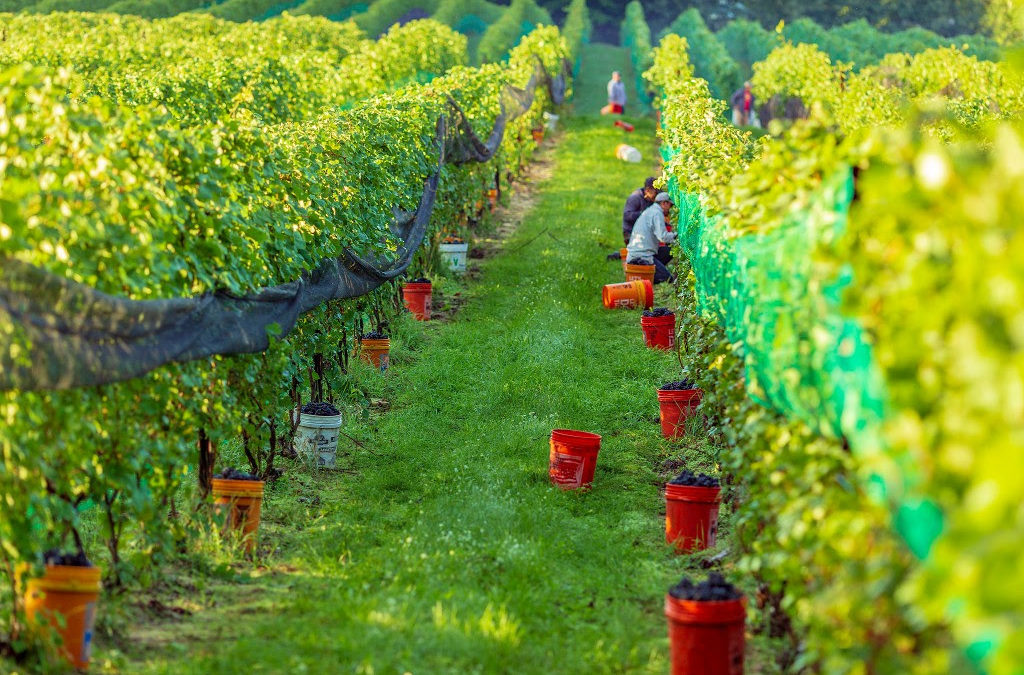It’s a question we’re often asked and fascinating topic to all of us:
How do you make wine? Here is a description of the process that keeps us busy year-round.
Our wineries begin harvesting grapes beginning in early fall – sometimes even August – by one of two means: mechanical harvesting or hand-picking. After harvesting, the grapes are brought to the winery and weighed and graded. Most grapes then go through the destemmer that gently breaks the skins of the grapes and removes the stems as well as any plant debris. From this point, the white and red varieties are handled differently: The white varieties are typically pressed several hours after crushing/destemming, whereas red varieties are left skin on through the fermentation phase and are not pressed until several weeks later.
From the press, the juice is pumped into large stainless steel tanks where commercial yeast is added to the juice through a process called inoculation. The yeast and natural sugar combine and start the fermentation process, during which the yeast converts the sugar into alcohol with a byproduct of carbon dioxide. Fermentation takes anywhere from ten days to two weeks.
After fermentation, the wine is allowed to sit for approximately two-to-three months to settle and clarify. Once settled, the process of racking begins. This process involves pumping all of the wine from the upper portion of the tank while leaving only the sediment to remain at the bottom of the tank. This sediment, known as lees, is a combination of juice, yeast cells, grape pulp, and wine solids. The lees is pressed through a lees press/filter to extract any remaining juice. All juice is then pumped back into a fresh clean tank for further aging.
During the final stages of aging, the wine is cold stabilized by cooling the tanks down to 22°F-25°F for one or two weeks. This causes potassium and calcium tartrate crystals to form on the walls and floor of the tank. The wine is then filtered, leaving the crystals behind, and then allowed to age anywhere from two-to-eight months or, if aging in oak barrels, possibly even longer. It all depends on the style of wine for which the winemaker is looking. Finished wines are bottled and allowed to sit for a certain amount of time depending on the style of wine.

